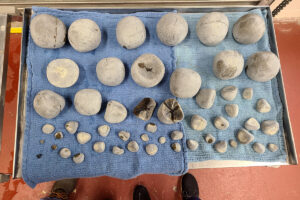Biosecurity in the Breeding Shed

And while we often think of biosecurity practices in relation to traveling competition horses and busy equine clinics, we can’t overlook the importance of good biosecurity on breeding farms. A contagious equine metritis (CEM) outbreak in 2008, for instance, affected 23 stallions and cost the industry nearly $2 million.
David Scofield, DVM, MS, Dipl. ACT, of Select Breeders Services, in Chesapeake City, Maryland, is one reproduction veterinarian who feels very strongly about biosecurity in the breeding shed. He faces daily disease risks at their breeding facility, not just from incoming and outgoing stallions and mares, but also from the farm’s proximity to other breeding farms. Scofield shared his smart practices for breeding shed biosecurity at the 2016 Theriogenology Conference, held July 27-30 in Asheville, North Carolina.
Sources of disease spread at breeding farms, said Scofield, include horses (both resident and trailer-ins, as well as tease mares), humans (grooms, employees, visitors), semen, and wildlife. But the biggest concern? Humans
Create a free account with TheHorse.com to view this content.
TheHorse.com is home to thousands of free articles about horse health care. In order to access some of our exclusive free content, you must be signed into TheHorse.com.
Start your free account today!
Already have an account?
and continue reading.

Related Articles
Stay on top of the most recent Horse Health news with

















